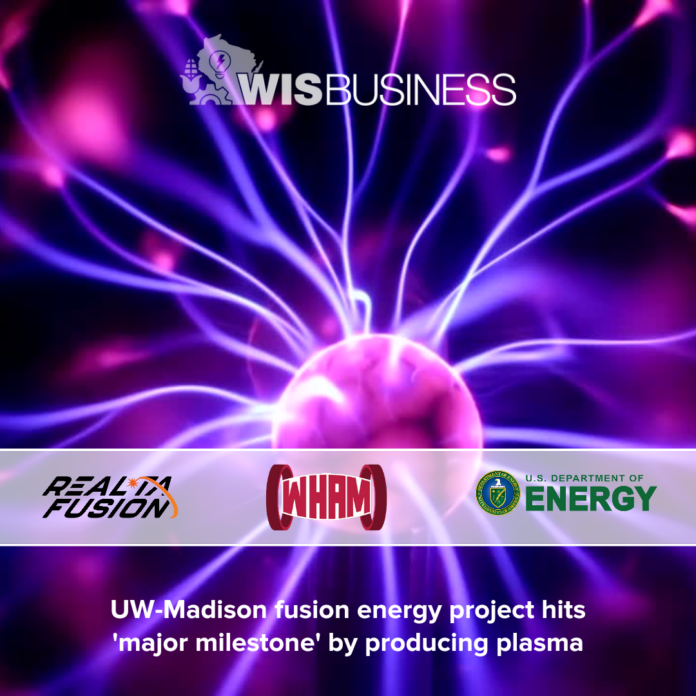UW-Madison has achieved a “major milestone” in an ongoing energy research project, announcing its fusion device has generated plasma for the first time.
Plasma is superheated material that’s often referred to as the “fourth state of matter,” distinct from solid, liquid and gas, according to an overview from the Massachusetts Institute of Technology.
Much like heating a liquid will change it into a gas once it’s hot enough, heating a gas will lead to the formation of plasma. Importantly for the field of fusion energy research, matter heated to the temperatures required for this goal takes the form of plasma, the overview notes.
The UW-Madison research team has spent the last four years building and testing a fusion energy device known as the Wisconsin HTS Axisymmetric Mirror, or WHAM. Last week marked its transition to official operations mode, and UW-Madison Prof. and project leader Cary Forest said generating plasma is “a crucial first step” toward the goal of decarbonizing the energy sector.
The university notes fusion could be “one of the cleanest potential energy sources” due to it producing carbon-free byproducts.
“We think fusion will be as good at producing electricity as any energy source would be, and we think it might be even better to use it as a source of industrial heat for making things,” Forest said in the release.
While nuclear fusion is occurring constantly within the sun and other stars, scientists have been striving for decades to unlock its power for energy generation.
UW-Madison’s mirror device seeks to limit the escape of the charged particles within the reactor using inward-facing magnets. The failure to efficiently contain the plasma, crucial for a net-gain of energy, has “greatly limited the function” of such machines until recently, according to the university.
But in recent years, much stronger high-temperature superconductor magnets have been developed, giving scientists a new tool for advancing fusion research. After getting the stronger magnets earlier this month, the UW-Madison team achieved plasma formation one week ago.
A video from the university shows a brief flash of blue light within the machine accompanied by a faint wailing noise.
UW-Madison, MIT and Massachusetts-based Commonwealth Fusion Systems have received $10 million from the U.S. DOE since 2020 to build the WHAM device. It’s now being operated as a partnership between UW-Madison and local company Realta Fusion, Inc.
Jay Anderson, co-founder of Realta Fusion and UW-Madison scientist, says WHAM is a “unique” experiment as it has set a world record in magnetic field strength for magnetically confined plasmas while also giving graduate and undergraduate students an opportunity for hands-on physics work.
“Realta over the last year and a half has really amplified what the UW team [has] been able to accomplish,” Anderson said in the release.
See more.






